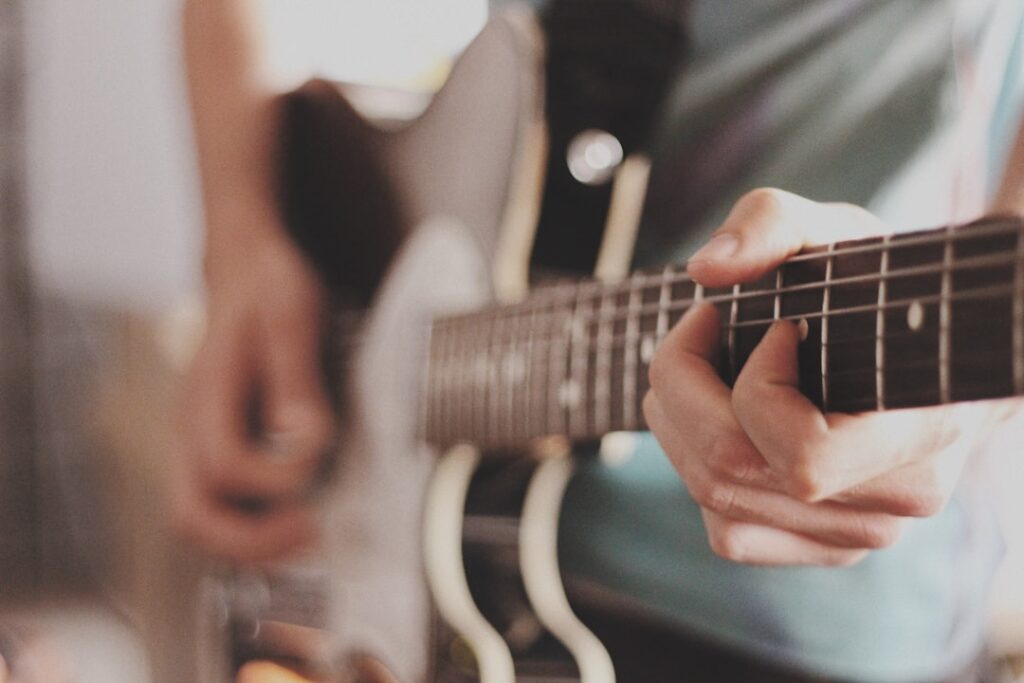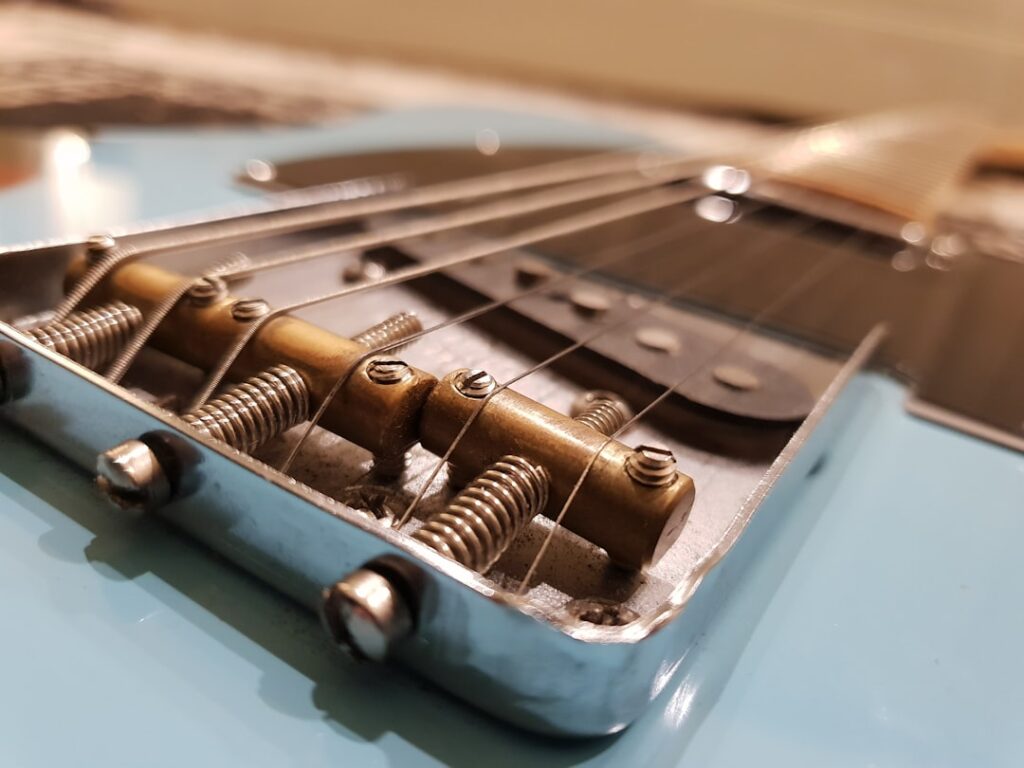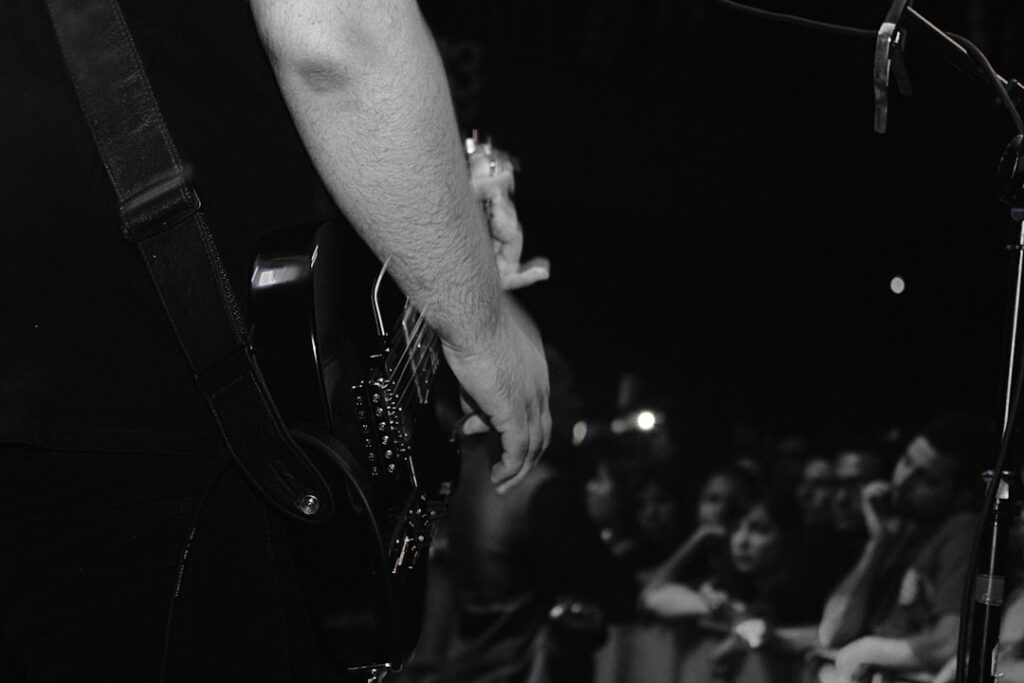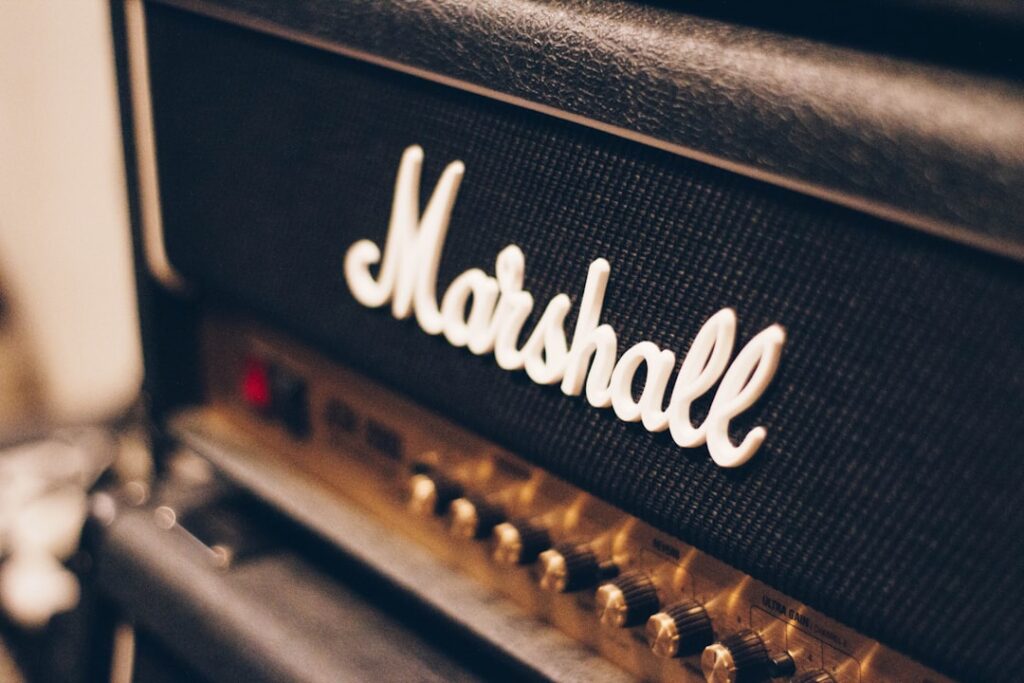- Introduction: Who Is Takayoshi Ohmura?
- Amplifier Setup: Recreating Ohmura’s Massive Tone with BABYMETAL
- Guitar Arsenal: Signature Axes Behind the Kami Sound
- Pedalboard & Effects: Streamlined Precision with Digital Power
- Tone Sculpting: EQ, Gain, and Mix Balance in a High-Octane Setup
- Affordable Gear Alternatives for Achieving Ohmura’s Signature Tone
- Conclusion: Simplicity, Precision, and Emotion—The Ohmura Philosophy
Introduction: Who Is Takayoshi Ohmura?
Takayoshi Ohmura is one of Japan’s most celebrated metal guitarists, recognized internationally for his role as a guitarist in BABYMETAL’s backing band, the Kami Band. Born on December 26, 1983, in Osaka, Japan, Ohmura is known for his unparalleled technical skill and melodic sensibility—qualities that have earned him respect far beyond Japan’s borders.
Ohmura’s signature sound is defined by a perfect fusion of mechanical precision and deeply emotional phrasing. His performance on BABYMETAL tracks like “Gimme Chocolate!!” and “Metal!” demonstrates not only his ability to handle complex riffs with machine-like accuracy but also to craft expressive, melodic solos that elevate the songs’ emotional impact. His fast alternate picking and legato passages aren’t just for show—they’re carefully crafted to serve the musical narrative.
When performing live with BABYMETAL, Ohmura dons the Kami Band’s iconic white robes and corpse paint, while wielding his signature bright pink ESP guitar, affectionately nicknamed “Pink-chan.” This striking visual contrast between playful color and a somber costume underscores the duality in his sound: the weight of metal with the accessibility of pop. His tone and performance are central pillars of BABYMETAL’s genre-bending aesthetic, catching the attention of guitarists worldwide.
Outside of BABYMETAL, Ohmura has released solo albums such as Nowhere To Go and Angels In The Dark, and is also active in the band C4 and as a support guitarist for other major acts. He teaches at MI JAPAN’s Osaka campus, mentoring the next generation of musicians.
▶ Search BABYMETAL Official Videos on YouTube
Amplifier Setup: Recreating Ohmura’s Massive Tone with BABYMETAL

Takayoshi Ohmura’s amplifier choices reflect not only his technical evolution but also the demands of BABYMETAL’s global stage. At the heart of his current rig is the KEMPER Profiling Amplifier, which has been his mainstay since around 2016—both in the studio and on massive international tours.
KEMPER’s standout feature is its ability to profile the tone of physical amps. Ohmura has been known to use profiles based on the ENGL Richie Blackmore Signature Amp, as of 2016. More recently, he leans toward profiles of the ENGL Artist Edition and Steve Morse models, both powered by EL34 tubes, which deliver the thick, mid-rich saturation typical of European metal tones.
Before switching to digital modeling, Ohmura used the Marshall JCM800 2203KK—the Kerry King signature model—and the Marshall JVM410H. The JCM800, famous for its aggressive, raw British tone, was instrumental in Ohmura’s early solo work and performances with his band C4.
Today, his live setup often involves sending a direct signal from the KEMPER to the PA, while routing through a Marshall cabinet for stage monitoring. Interestingly, he sometimes uses a real Marshall head as a feel-based monitor amp onstage, ensuring the tactile punch of a real tube amp remains. This hybrid approach fuses digital precision with the visceral power of analog gear—perfect for BABYMETAL’s high-energy, high-production global shows.
| Gear | Brand | Amazon Link | Band | Guitarist | Notes |
|---|---|---|---|---|---|
| Profiling Amplifier | KEMPER | View on Amazon | BABYMETAL | Takayoshi Ohmura | Main amp since 2016. Uses ENGL-based profiles |
| JCM800 2203KK | Marshall | View on Amazon | BABYMETAL | Takayoshi Ohmura | Kerry King model. Key amp in early solo and C4 work |
| JVM410H | Marshall | View on Amazon | BABYMETAL | Takayoshi Ohmura | Versatile 4-channel amp. Possibly used as onstage monitor |
Guitar Arsenal: Signature Axes Behind the Kami Sound

One of the most iconic visual elements of Takayoshi Ohmura’s stage presence is his bright pink guitar—lovingly referred to as “Pink-chan” by fans. This bold instrument is part of his signature model series produced by ESP Guitars, specifically tailored to meet his demanding technical style and tonal preferences.
ESP Signature Models
Ohmura’s main guitars are based on ESP SN-series superstrat designs, equipped with:
HSS pickup configuration for tonal flexibility
Scalloped fingerboards for faster solo phrasing
Floyd Rose tremolo systems for pitch manipulation without sacrificing tuning stability
These guitars are not only visually striking but also deliver crystal-clear articulation, ideal for his lightning-fast shred lines and smooth melodic phrasing. His ESP signature line even includes limited edition colors—like Purple and Yellow models—for visual variation on tour.
In some performances, Ohmura switches to an ESP Horizon or other bolt-on neck superstrats, depending on the setlist and tuning requirements. Regardless of the model, his guitars are always set up to deliver surgical precision and sustain.
| Model | Brand | Amazon Link | Band | Guitarist | Type | Notes |
|---|---|---|---|---|---|---|
| SN Series Signature “Pink-chan” | ESP | View on Amazon | BABYMETAL | Takayoshi Ohmura | Electric Guitar | Main touring guitar. Custom specs for high-speed performance |
| Horizon NT-7 / Custom Bolt-on Models | ESP | View on Amazon | BABYMETAL | Takayoshi Ohmura | Electric Guitar | Used occasionally for alternate tunings and solo projects |
Whether it’s explosive solos or melodic twin harmonies with other Kami Band guitarists, Ohmura’s ESP arsenal ensures every note is delivered with authority and clarity.
Pedalboard & Effects: Streamlined Precision with Digital Power
Takayoshi Ohmura’s pedalboard setup exemplifies modern minimalism and tour-grade reliability. Since 2016, his core tone and effects processing have been fully integrated into the KEMPER Profiling Amplifier, greatly reducing the need for extensive analog pedal chains.
Compact Floor Setup for Massive Tone
For most BABYMETAL performances, Ohmura’s pedalboard is limited to only the essentials:
TC Electronic PolyTune 2 – A polyphonic tuner for ultra-fast tuning checks
Shin’s Music PERFECT VOLUME -HYBRID- – A volume pedal enhanced with glow-in-the-dark tape, ensuring visibility on dimly lit stages
This stripped-down approach allows him to maintain complete focus on performance, reducing stage clutter and minimizing failure points. The volume pedal’s visibility enhancement—luminescent tape—is a subtle but practical touch suited for theatrical settings like BABYMETAL’s dark stage design.
Inside the KEMPER
All modulation, delay, reverb, and amp gain staging are handled inside the KEMPER unit. This eliminates signal degradation often caused by long analog chains and offers preset consistency during global tours. In high-stakes live environments, this reliability is crucial.
Legacy Pedals: From Boost to Wah
In earlier stages of his career—especially during his solo work and sessions with C4—Ohmura utilized a wide range of analog stompboxes, including:
Xotic RC Booster for clean solo boosts
DOD 250 Preamp to add grit and sustain
Budda Wah for expressive lead phrasing
MAXON AD9 Pro for analog delay warmth
BOSS NS-2 for noise suppression in high-gain setups
SOBBAT DB-1 for overdrive richness
Boot-Leg Dr.Mid Rich to push mids in the mix
Morpheus DropTune for pitch-shifted alternate tunings
ADA Flanger for classic modulation effects
Many of these units are now archived, but their sonic characteristics continue to influence Ohmura’s digital presets today.
| Pedal | Manufacturer | Amazon Link | Band | Guitarist | Type | Notes |
|---|---|---|---|---|---|---|
| PolyTune 2 | TC Electronic | View on Amazon | BABYMETAL | Takayoshi Ohmura | Tuner | Compact polyphonic tuner; accurate and fast |
| PERFECT VOLUME -HYBRID- | Shin’s Music | View on Amazon | BABYMETAL | Takayoshi Ohmura | Volume Pedal | Glow tape for stage visibility; premium smooth taper |
| RC Booster | Xotic | View on Amazon | Various | Takayoshi Ohmura | Booster | Used during early solo years for clean signal lift |
| Budda Wah | BUDDA | View on Amazon | Various | Takayoshi Ohmura | Wah Pedal | Smooth sweep; ideal for emotional soloing |
| AD9 Pro | MAXON | View on Amazon | Various | Takayoshi Ohmura | Analog Delay | Warm vintage-style delay for lead phrasing |
While the analog days of large pedalboards are behind him, the knowledge and tonal preferences honed through those tools are now distilled into digital presets—allowing for high portability without sacrificing nuance.
Tone Sculpting: EQ, Gain, and Mix Balance in a High-Octane Setup
Takayoshi Ohmura’s approach to tone isn’t about cranking everything to the max—it’s about strategic balance. In BABYMETAL’s complex sonic environment, where synths, dual vocals, and tight rhythm sections compete for sonic space, Ohmura’s EQ and gain structure are precisely dialed in to blend impact with clarity.
KEMPER EQ Settings & Gain
Within the KEMPER Profiling Amplifier, Ohmura typically sets his tone with:
- Bass: 4.5–5.0 – Enough punch to fill out the low end, but not muddy
- Mid: 3.5–4.0 – Slightly scooped to make room for vocals and snare drum
- Treble: 5.5–6.0 – Brighter top-end to cut through dense mixes
- Presence: +0.5 to +1.0 – Added bite without harshness
- Gain: 60–70% – Heavy enough for modern metal, but short of saturation to retain definition
These values reflect his commitment to precision: instead of chasing sheer distortion, he emphasizes note separation and harmonic clarity, especially during fast alternate-picking passages or when playing harmonized leads with other Kami Band members.
Spatial Effects & Delay Timing
Ohmura uses slapback delays and short reverb tails to give his solos more dimension without washing out the articulation. In some solos, a slightly synced delay (e.g., 400–450ms at dotted eighth) helps create space while maintaining rhythmic integrity—especially important for tracks like “Ijime, Dame, Zettai” or “PA PA YA!!”.
Live Sound Integration
Crucially, Ohmura’s sound isn’t built in isolation. He works closely with BABYMETAL’s front-of-house engineers to ensure his guitar occupies the mid-to-upper spectrum cleanly without overpowering Su-metal’s vocals or the thunderous kick-snare groove. He’ll often reduce mids slightly in the amp profile, allowing the PA crew to boost that range front-of-house if needed—leaving flexibility without compromising stage monitoring.
In large venues and festivals, where sound behaves differently, this disciplined tonal strategy ensures consistency from the smallest club to Tokyo Dome-level arenas.
Affordable Gear Alternatives for Achieving Ohmura’s Signature Tone

You don’t need a KEMPER and custom ESP to start chasing Takayoshi Ohmura’s razor-sharp tone. With smart substitutions, even budget-conscious guitarists can get surprisingly close to his sound. Here’s a breakdown of cost-effective gear that captures the essence of his BABYMETAL tone.
🎛️ Amp & Effects Modeling Substitutes
- Line6 Helix LT – Offers excellent ENGL-style amp models, delivering that tight, compressed high-gain response with articulate mids. Around ¥100,000 ($700–800).
- BOSS GT-1000 – Affordable (~¥50,000 or $400), compact, and known for its Marshall and boutique amp models. Reliable live or in the studio.
These are both excellent KEMPER alternatives that integrate effects chains and amp modeling in one robust unit—ideal for players seeking portability and flexibility.
🎸 Guitars That Channel the SE Ohmura Custom Vibe
- Yamaha Pacifica 611HFM – Coil-splittable HSS layout gives you versatile tone. Clear highs and tight low-end response make it an excellent Strat-style workhorse (~¥70,000 or $500).
- Ibanez RG421 – For under ¥30,000 (~$250), this sleek metal-ready axe handles drop tunings and high-gain tones with ease.
- Ibanez RG7421 – A great 7-string intro model with a similar scale length and punch to Ohmura’s ESP Snapper-7. Upgrade the pickups to EMG 707s for added authenticity.
These models don’t just replicate looks—they’re functionally similar in scale, pickup output, and playability.
🧰 Budget-Friendly Pedals That Get You Closer
- BOSS BD-2 Blues Driver – Ohmura’s tone thrives on clarity and bite. The BD-2 offers crisp drive and a subtle mid bump—ideal for high-speed shredding.
- TC Electronic PolyTune 3 – Precise, fast, and affordable (~¥12,000). A great alternative to his PolyTune2.
- BOSS FV-500H – Rugged volume pedal with smooth taper, suitable for stage use—even under dark lighting.
🎛 Suggested EQ & Tone Settings for Emulation
If you’re using a multi-effects unit or modeler:
- Gain: ~70%
- Bass: 4.5
- Mid: Boost around 800Hz by +2–3dB
- Treble: Slightly cut 3kHz by −1–2dB
- Presence: Moderate boost for articulation
- High-pass filter: Cut below 100Hz
- Delay: 350–450ms dotted 8th with low mix
- Reverb: Short plate or hall, mix under 20%
These settings are optimized for definition, tight low-end, and expressive high-speed phrasing, true to Ohmura’s live and studio tones.
Conclusion: Simplicity, Precision, and Emotion—The Ohmura Philosophy

Takayoshi Ohmura’s tone isn’t just the product of premium gear—it’s the result of intentional design, musical precision, and deep emotional connection to the instrument. His rig, whether packed into a compact KEMPER profile or spread across a full stage setup, is built around a core principle: deliver clarity and power without excess.
Even with flashy guitars and high-tech digital tools, Ohmura resists overprocessing. His tone remains organic, dynamic, and honest—perfectly complementing BABYMETAL’s theatrical stage presence and genre-bending music.
To emulate his sound:
- Focus on tight gain structure with articulate note separation
- Use balanced EQ, avoiding overly scooped or hyped frequencies
- Choose guitars that are fast-playing and tonally versatile (HSS with tremolo is ideal)
- Integrate effects that enhance, not dominate, your signal chain
しかし、ギアを超えて、大村のサウンドの真の核心は、リズムのコントロール、メロディックな感性、そしてパフォーマンスへの絶え間ない献身にあります。彼がソロをリッピングするときも、グルーヴ感のあるリフでロックインするときも、彼の演奏は常に曲を第一に考えています。
For aspiring guitarists, Ohmura offers a compelling model:
“Refined technical skill, fused with emotional fire—powered by gear that gets out of the way.”
Study his tones. Explore his phrasing. Adapt his discipline to your own journey—and you’ll discover a deeper level of musical identity, just as he has on stages around the world.






